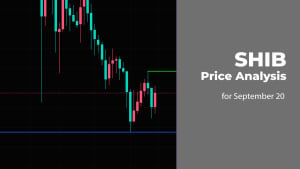
Disclaimer: The opinions expressed by our writers are their own and do not represent the views of U.Today. The financial and market information provided on U.Today is intended for informational purposes only. U.Today is not liable for any financial losses incurred while trading cryptocurrencies. Conduct your own research by contacting financial experts before making any investment decisions. We believe that all content is accurate as of the date of publication, but certain offers mentioned may no longer be available.
Crypto analyst Benjamin Cowen recently shared an intriguing insight via Twitter, signaling potential implications for the cryptocurrency market. Cowen pointed out that the U.S. Dollar Index (DXY) has formed a golden cross on its chart, a technical pattern often associated with a significant uptrend.
A golden cross occurs when a short-term moving average crosses above a long-term moving average on an asset's price chart. Cowen's observation suggests that the U.S. dollar might be on the verge of a notable strengthening, with possible consequences for the broader financial landscape, including cryptocurrencies.
According to Cowen, as the U.S. dollar gains momentum, it could attract capital away from other markets, including the crypto space. However, he also anticipates a minor correction in the dollar index before such a shift fully materializes, which could lead to temporary gains in cryptocurrency prices.
Dominance issues
One crucial aspect revealed by Cowen's analysis is the potential impact on altcoins like Shiba Inu (SHIB) and Cardano (ADA). Cowen believes that Bitcoin's dominance on the cryptocurrency market will likely continue to grow even during this period of adjustment, potentially concentrating liquidity in Bitcoin and leaving altcoins vulnerable.
This is not the first time Cowen has expressed concerns about the crypto market. Back in September, he hinted at an impending downturn, citing a notable reduction in liquidity. Cowen expects this trend to persist until quantitative easing measures, per U.S. Federal Reserve policy, potentially come into play, a scenario he believes might not materialize until around the summer of 2024.


 Dan Burgin
Dan Burgin Vladislav Sopov
Vladislav Sopov U.Today Editorial Team
U.Today Editorial Team